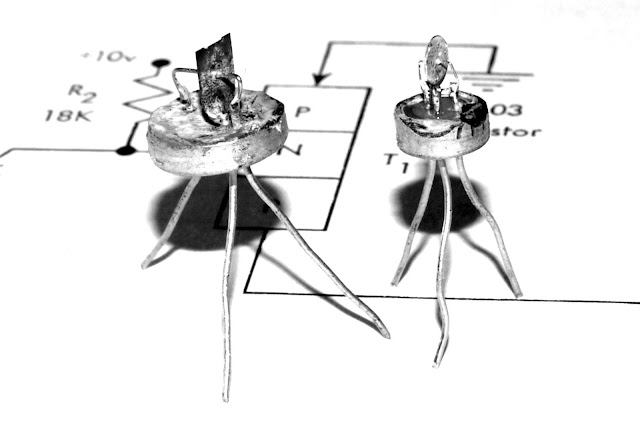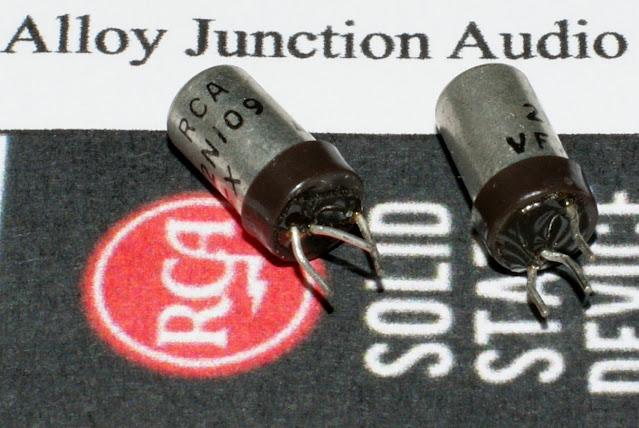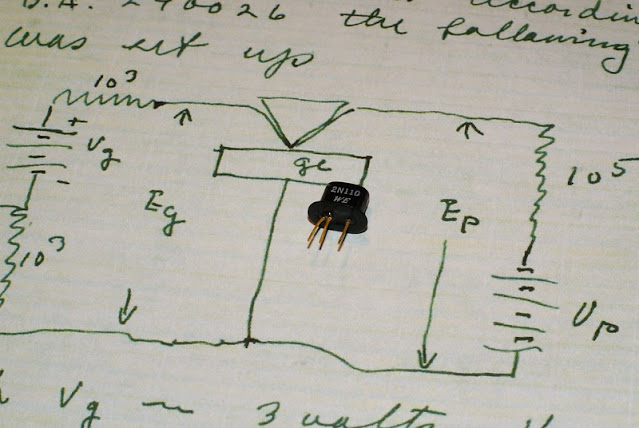Alloy Junction Transistors From RCA

Inside two RCA alloy junction transistors from the 1950s. The smaller one is a 40V/50mA pnp and the larger is a 40V/250mA, hence the thicker wires for lower loss at the higher current. The metal connecting the base is also larger to provide better heat dissipation. The base is a thin cut slice of pure n-type germanium which has indium pellets alloyed to each side creating the pnp junctions. There was viscous white goo inside the cases which was difficult to remove.








